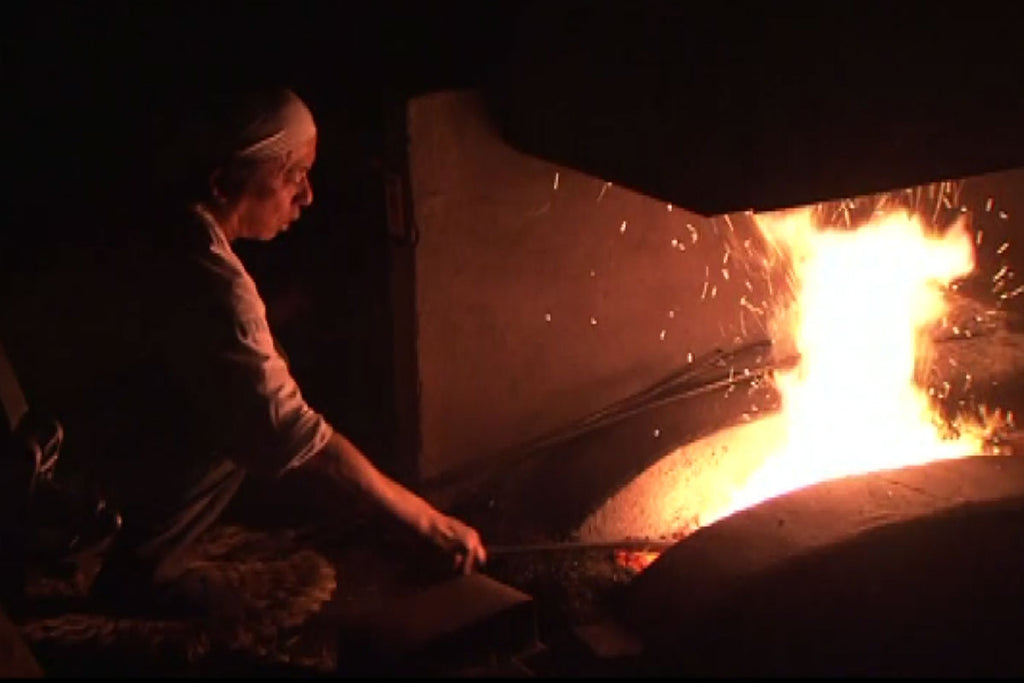-Helping to maintain traditional Japanese sword making-
Nihonto literally means a sword made in Japan by a unique Japanese blacksmithing method and is also known as Samurai sword or Katana in other countries. The origin of the Japanese sword dates back to the end of the Heian period (794-1185), and since then, the manufacturing process has been passed down from master to apprentice. The Japanese sword is a weapon that "does not break, does not bend, and cuts well", and is a traditional craft that has an element of artistic value due to the beauty of its shape, grains, and forged pattern, and is a rare example of "the ultimate in the beauty of use" in the world.
In addition, since ancient times, there has been a custom in Japan of giving daggers as gifts to protect loved ones, and these daggers are called "mamori-gatana," or "guardian swords. Mamori-gatana are also given to newly born children and brides or placed under the pillow or on the chest of a dead person. Furthermore, it is also said to ward off evil spirits when placed under a person's pillow at bedtime, and this custom was called "makura-gatana" (makura sword) in samurai families.
What is Shinsakuto?
Japanese swords are available on the market in various conditions from different periods. From the katana mania, the collector of Japanese swords, to the person considering purchasing a sword who is vaguely fascinated by the sword's appearance, choosing a sword that you like can be a lot of fun. While choosing an antique sword can be a lot of fun, here we will introduce you to custom-made, newly forged Japanese swords known as Shinsakuto.
Shinsakuto is a custom order Katana because it literally means a newly made sword. In other words, the swordsmith will make it according to your wishes in terms of length, warp, and shape, and it has many charms that antique swords do not have.
No deformation due to sharpening
The blade of a Japanese sword is hardened not only the blade part but also the entire body. From the time of its creation to the present, even if it has never been used, it may have been sharpened due to its surface becoming dull. It is said that sharpening a sword blade up to approximately seven times is the limit, so much so that sharpening a sword blade greatly affects its durability, and once it has been sharpened, the leather iron is reduced and the blade is more susceptible to bending. The sharpening method known as "cosmetic sharpening" for art appreciation, which is in widespread use today, was introduced after the Meiji period (1868-1912), which means that swords made before the Edo period have been sharpened at least once.
Never used
Japanese swords are said to be bent and unbreakable, but once a sword is bent, no matter how good a swordsmith is at repairing and straightening the bend, the bent part will bend more easily than other parts of the sword. It is impossible to tell if the sword has been bent before because the signs of bending are not discernible after restoration. Above all, if there are signs that the sword has been used even once, people may consider the possibility that it was used to kill, which may lead to discomfort for some people.
100% trustworthy inscription
Not only swords, but antique products always have the problem of authenticity. No matter how many certificates there are, in the end, they cannot be beyond the realm of guesses and hypotheses by later generations, and furthermore, there may be fake names that look exactly like the real thing. If the purpose of a sword is to be used for sword drawing or test cutting, there is little need to be particular about the name, but for those who want to be particular about the authenticity of a sword, the existence of the name is significant.
Inheritance of the current culture of Japanese sword making
In the 21st century, there are still swordsmiths in Japan who continue to make Japanese swords. However, the number of swordsmiths and the number of Japanese swords produced are decreasing every year. Some sword smiths work part-time to make swords, as it is difficult for them to make a living from swordsmithing alone. But they continue to make swords because they want to keep the culture and tradition of Japanese sword-making alive. Therefore, by ordering a new sword, you are helping to keep the unique culture of Japanese swords alive in the future.
You can get a sword exactly the way you want it
Each of us has a different body shape and frame. Therefore, it is not easy to find a sword that fits you perfectly. It is not possible with antique swords to realize the most wonderful sword you can think of, not only in terms of practical use such as sword drawing and test cutting.
There are excellent swordsmiths all over Japan. At Tozando, we would like to highlight and introduce the smiths who will be responsible for the Japanese swords of the future.


4 comments
Mar 04, 2025 • Posted by Tozando Katana Shop
Thanks for the comment. If you want a new sword blade, let me know which swordsmith you would like to have it made by and what other options you have and I will give you an approximate budget and turnaround time.
Mar 04, 2025 • Posted by Tozando Katana Shop
Thanks for the comment. All swordsmiths make tanto and shoto.
Mar 04, 2025 • Posted by ROCCO FRANCO
Good morning,
Which of the listed swordsmiths make tanto and shoto
Aug 04, 2023 • Posted by Rocky Lynch
What is the process to commission a new blade? Are there smiths who specialize in specific styles?
Leave a comment: